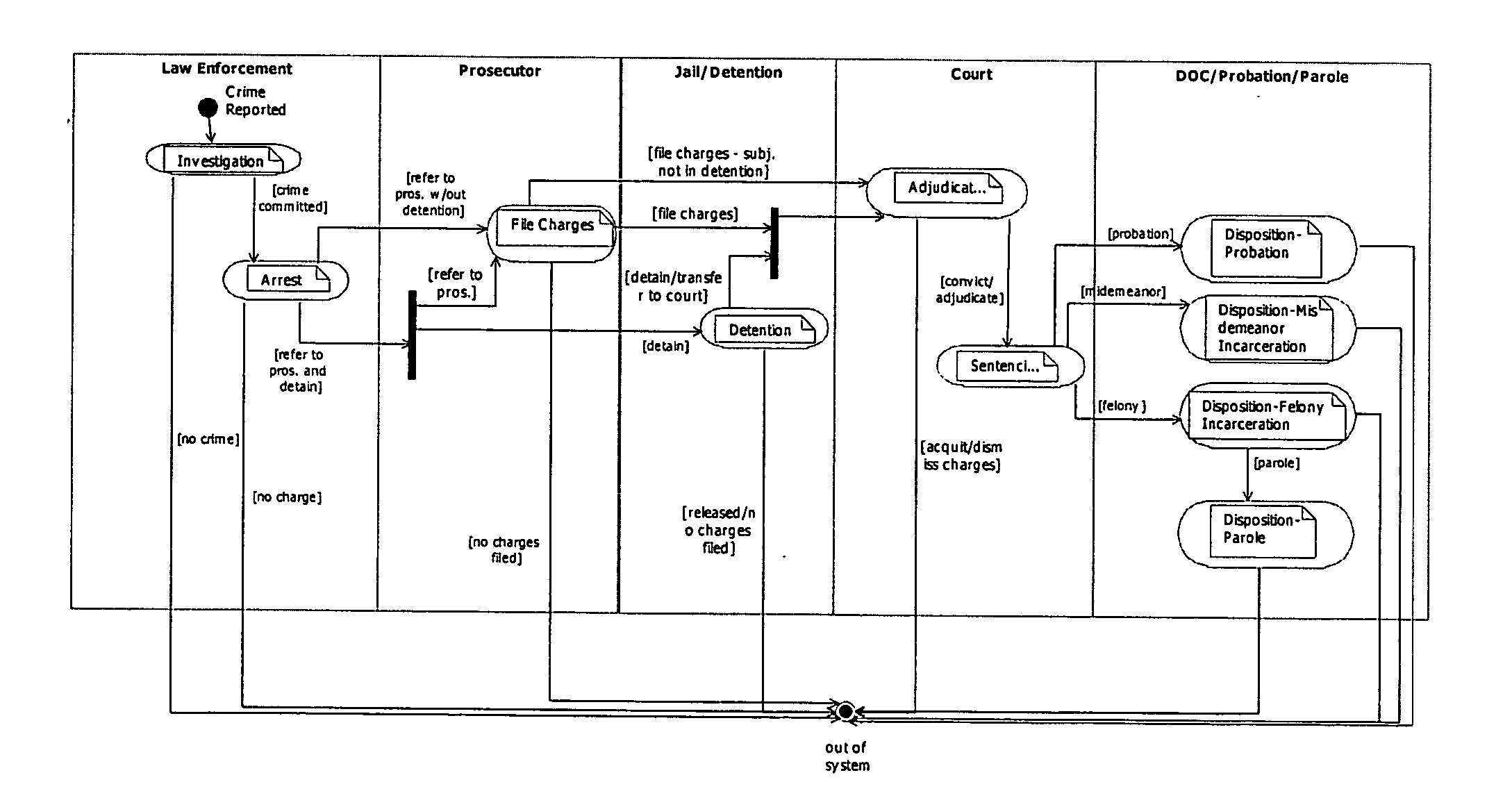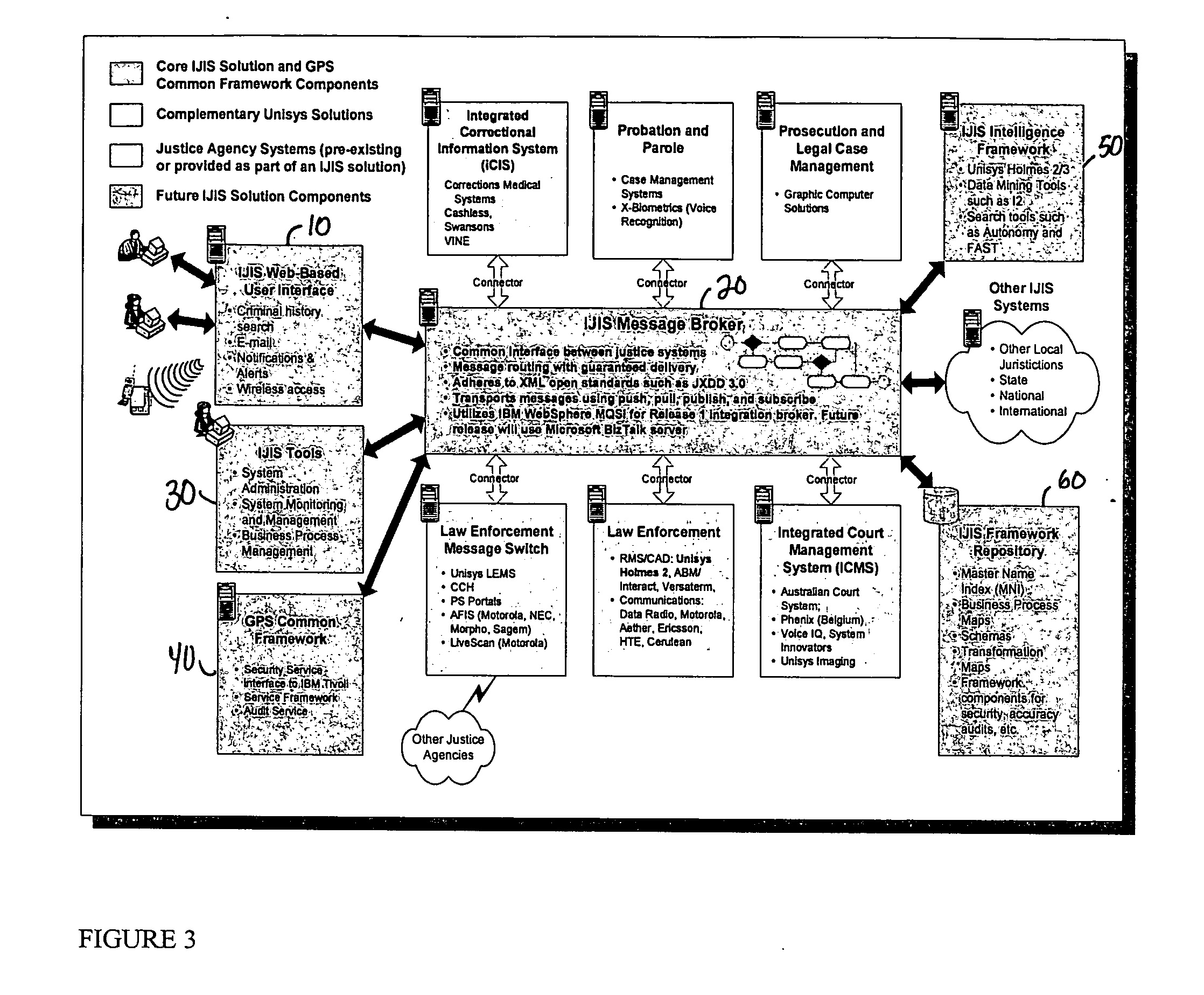Platform independent model-based framework for exchanging information in the justice system
a model-based framework and justice system technology, applied in the field of platform independent, scalable, model-based framework, can solve the problems of not being able to share data directly via electronic connection with other systems, not being able to automate the sharing of information among justice agencies, and not being able to share information well among federal agencies
- Summary
- Abstract
- Description
- Claims
- Application Information
AI Technical Summary
Benefits of technology
Problems solved by technology
Method used
Image
Examples
Embodiment Construction
[0088] A detailed description of illustrative embodiments of the present invention will now be described with reference to FIGS. 1-48. Although this description provides detailed examples of possible implementations of the present invention, it should be noted that these details are intended to be exemplary and in no way delimit the scope of the invention.
[0089] It should be understood that the methodology disclosed below can be implemented with the aid of software development tools that execute on a computing device. Such software development tools may be embodied in the form of program code (i.e., instructions) stored on a computer-readable medium, such as a magnetic, electrical, or optical storage medium, including without limitation a floppy diskette, CD-ROM, CD-RW, DVD-ROM, DVD-RAM, magnetic tape, flash memory, hard disk drive, or any other machine-readable storage medium, wherein, when the program code is loaded into and executed by a machine, such as a computer, the machine ...
PUM
 Login to View More
Login to View More Abstract
Description
Claims
Application Information
 Login to View More
Login to View More - R&D
- Intellectual Property
- Life Sciences
- Materials
- Tech Scout
- Unparalleled Data Quality
- Higher Quality Content
- 60% Fewer Hallucinations
Browse by: Latest US Patents, China's latest patents, Technical Efficacy Thesaurus, Application Domain, Technology Topic, Popular Technical Reports.
© 2025 PatSnap. All rights reserved.Legal|Privacy policy|Modern Slavery Act Transparency Statement|Sitemap|About US| Contact US: help@patsnap.com



